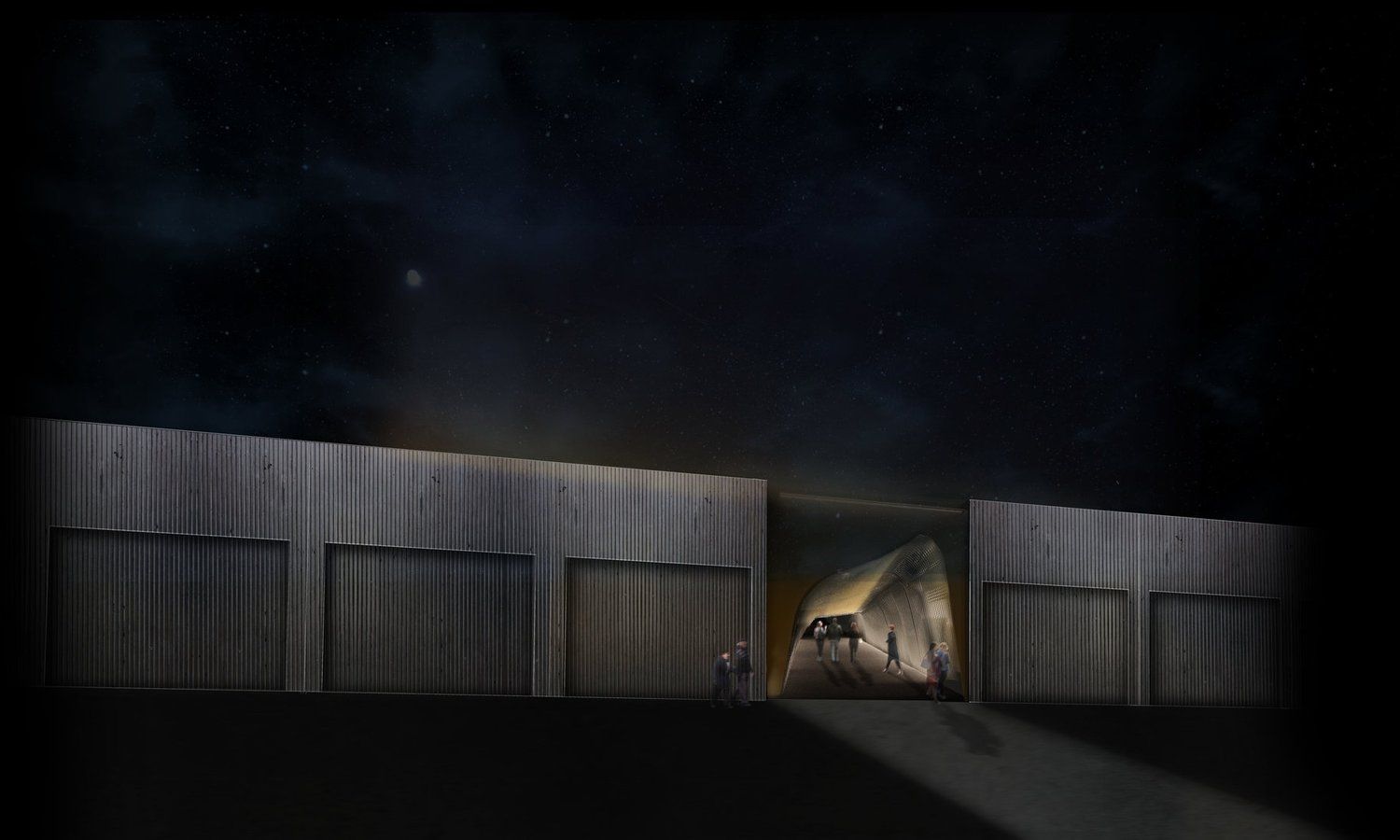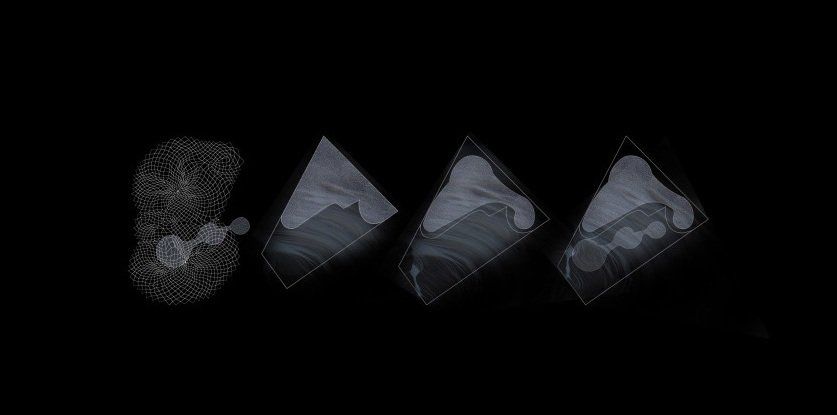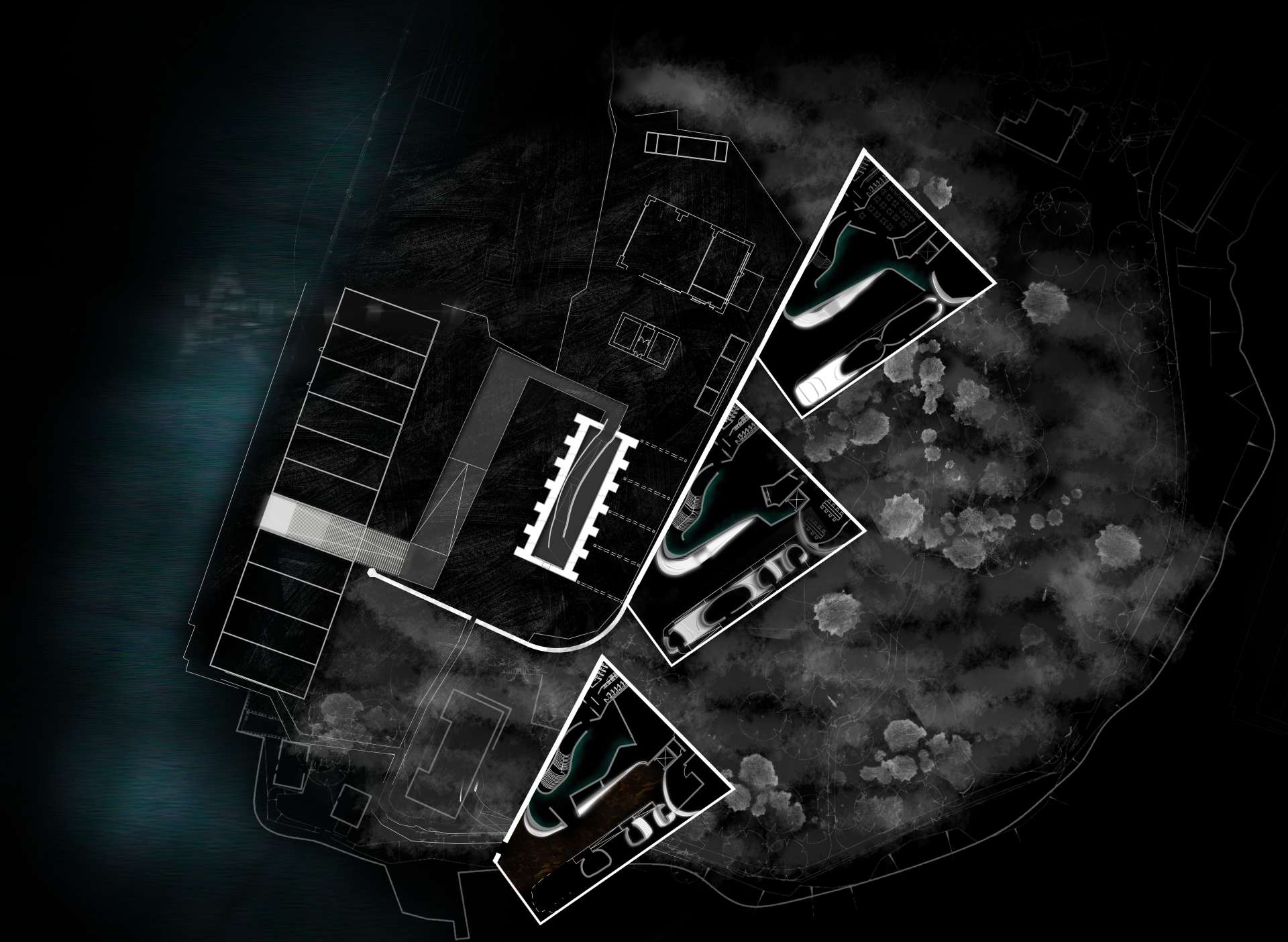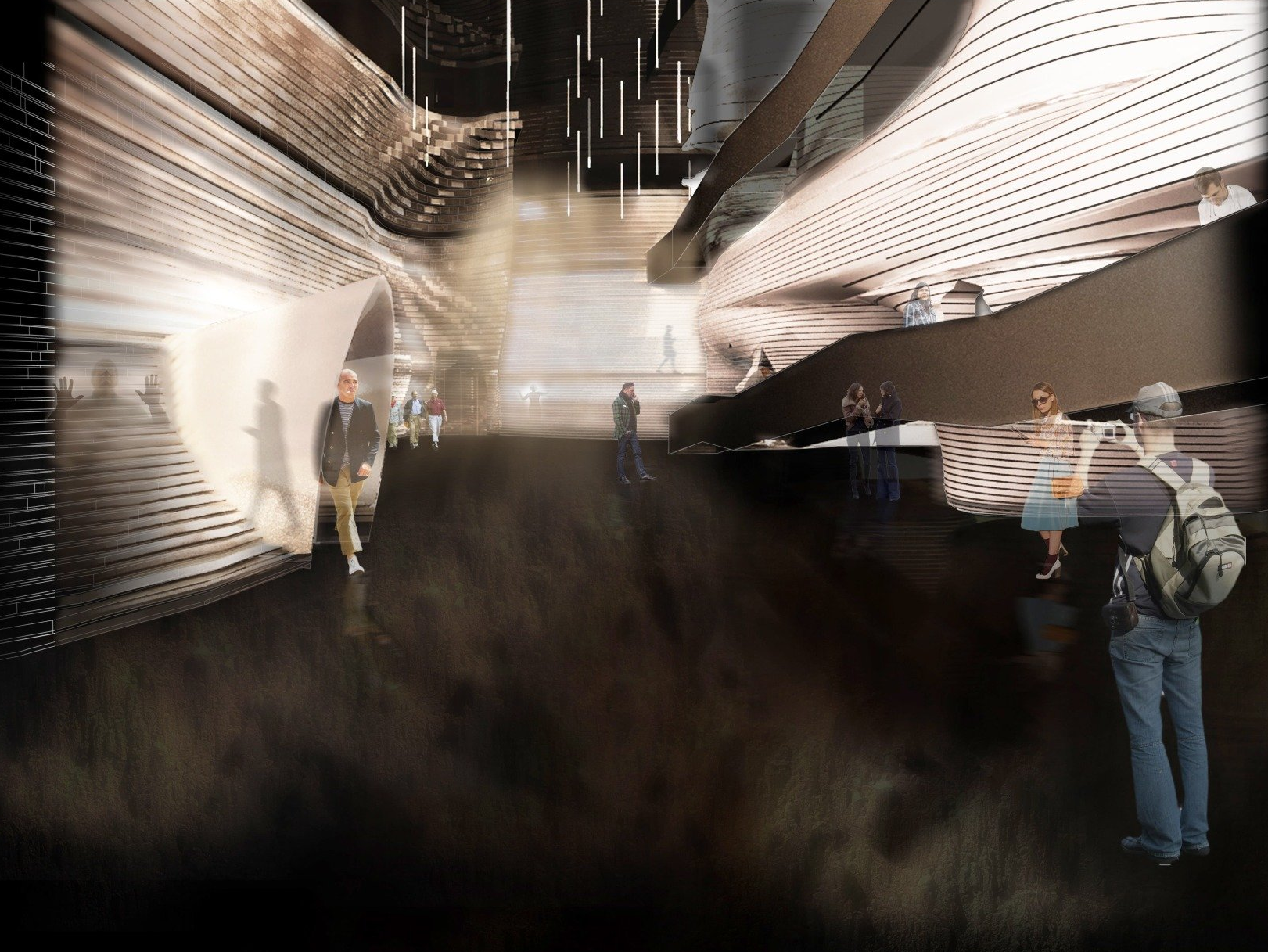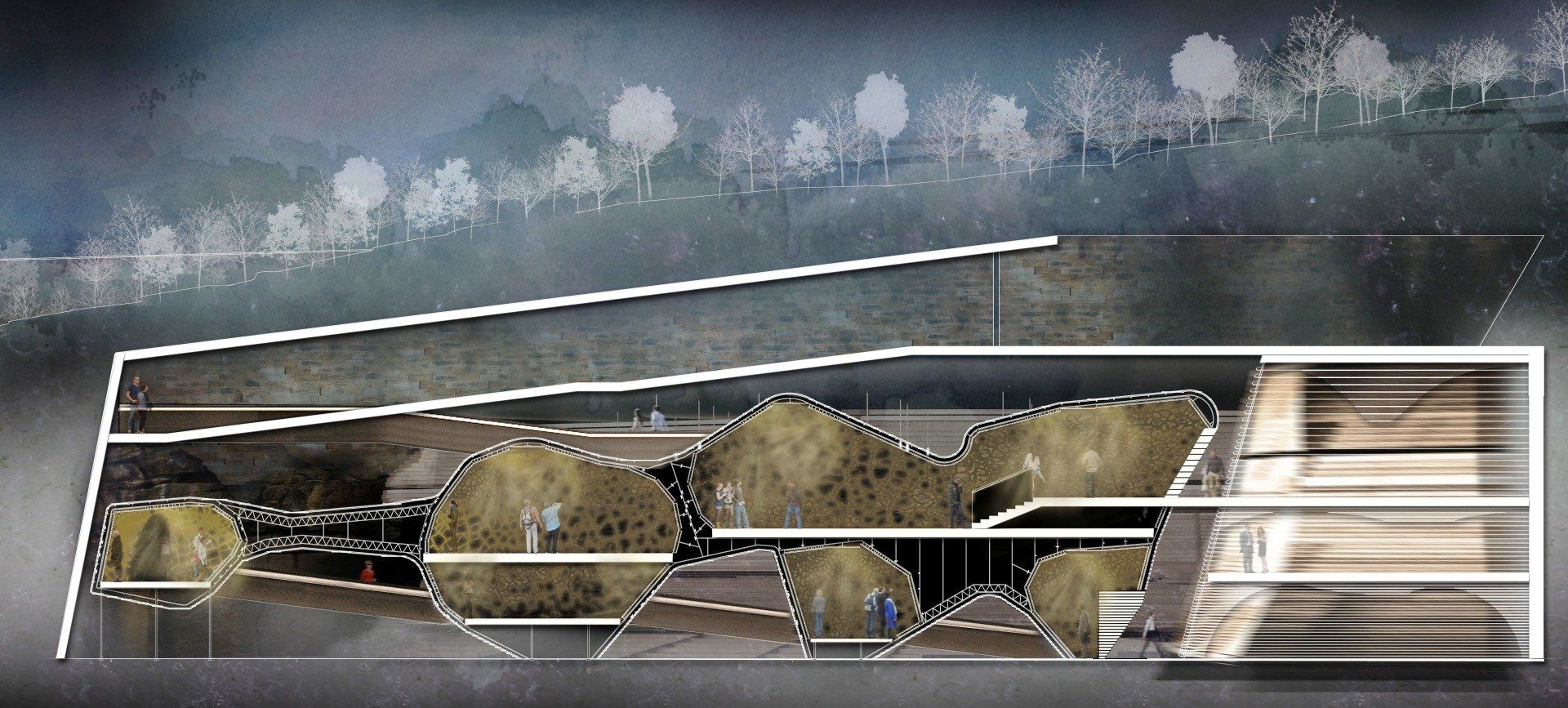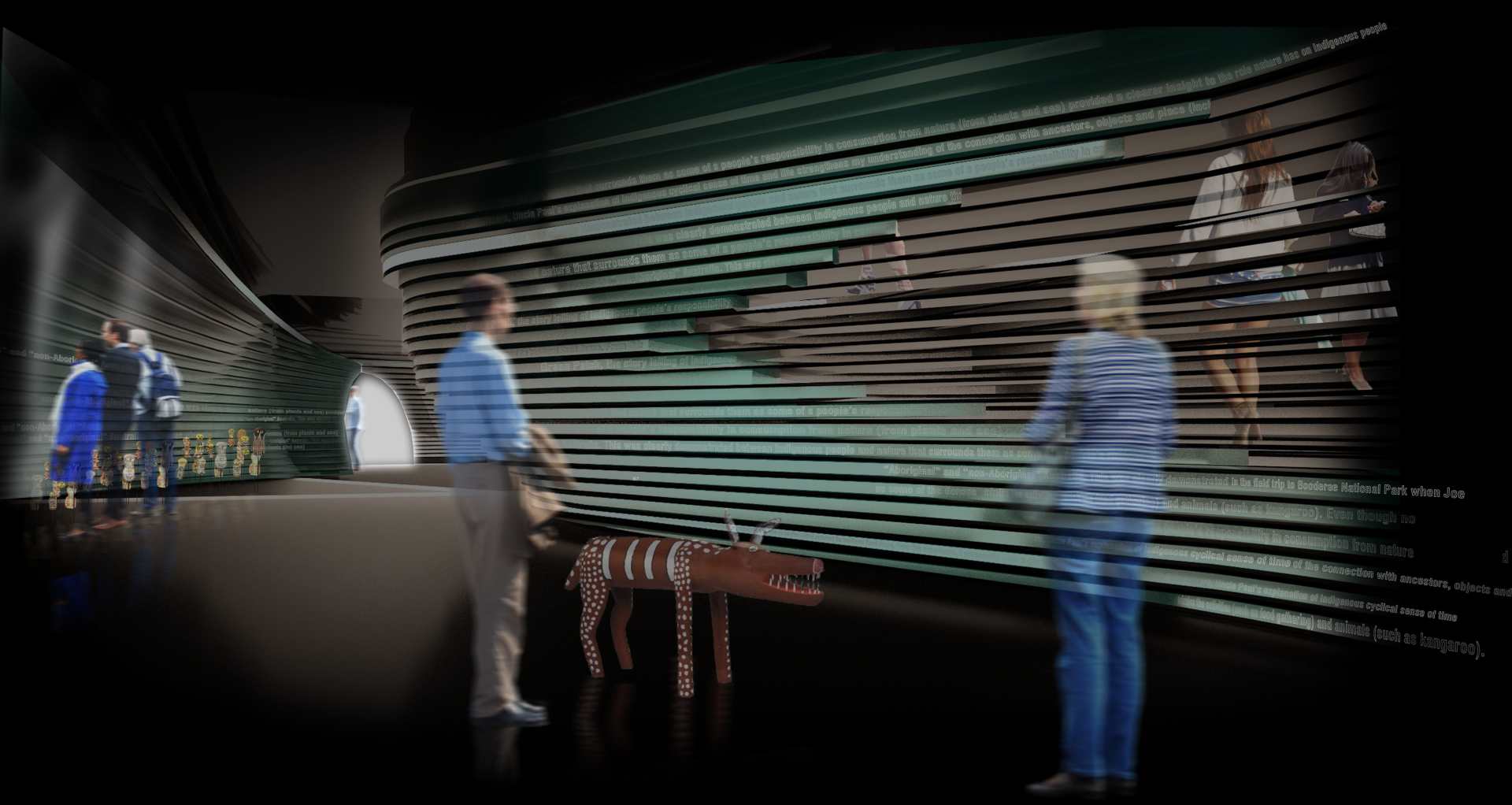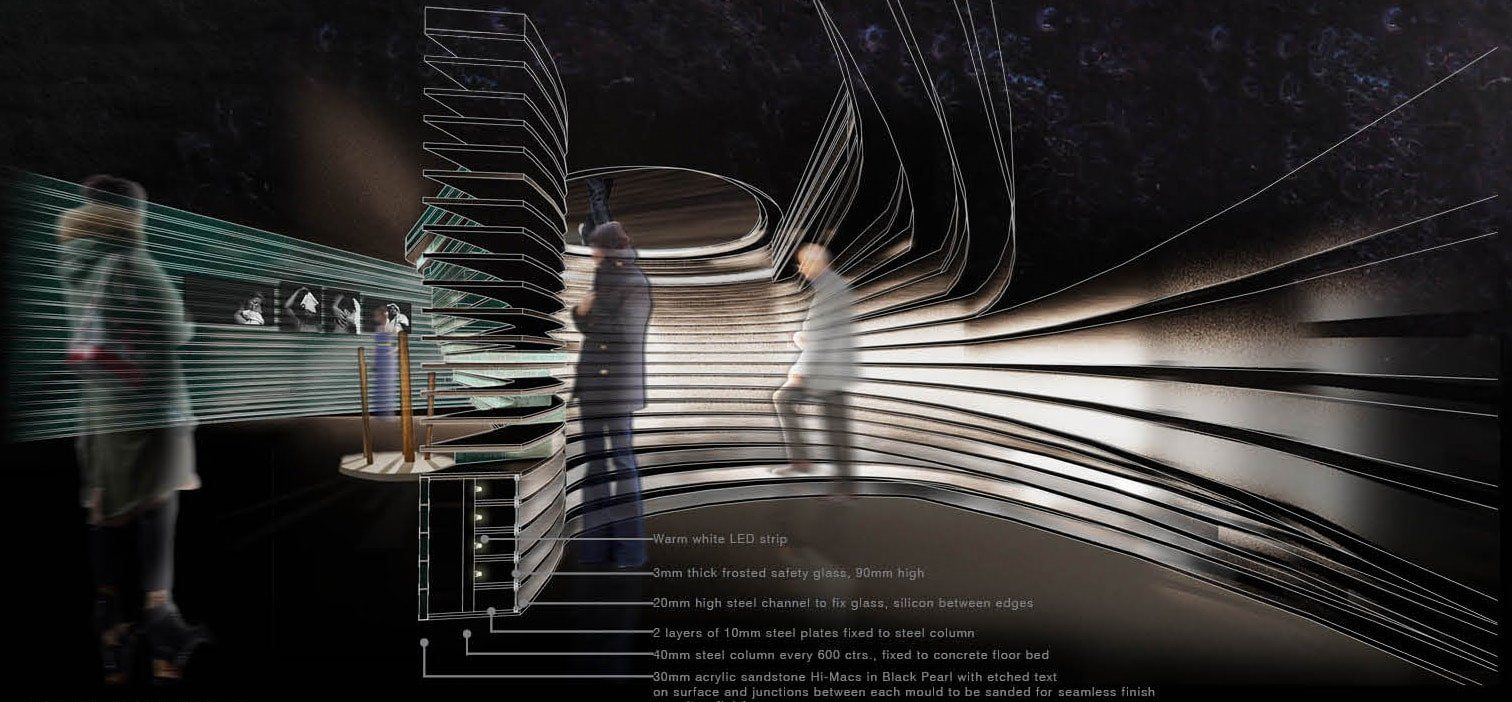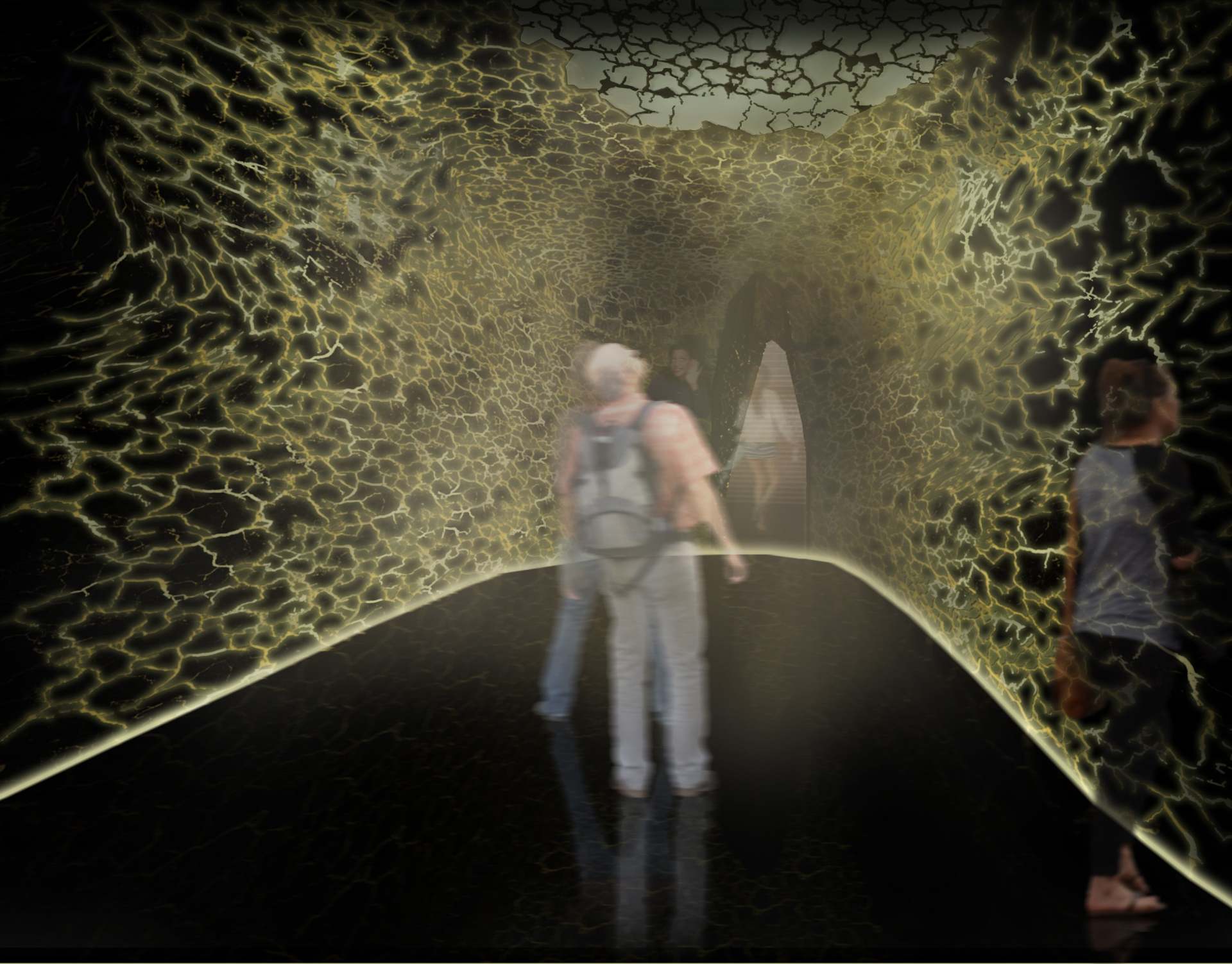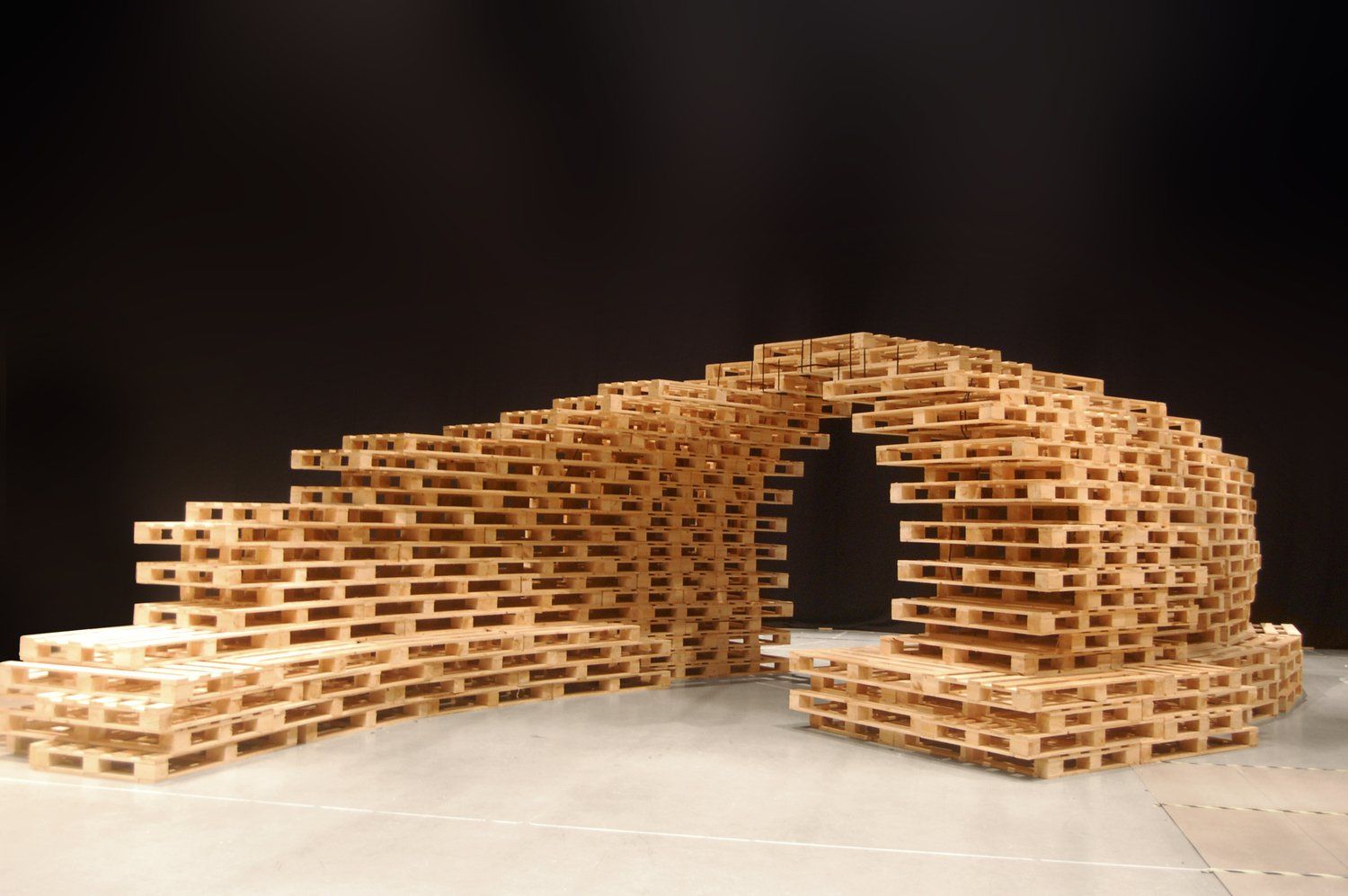Indigenous Memorial Museum
Civic, Masterplanning
2011-2012 | Sydney, Australia
Indigenous Memorial Museum serves as a space to house both tangible objects and intangible memories. The museum is dedicated to the commemoration of the horrific impact of colonial settlement.
Software: Sketchup, 3Ds Max, AutoCAD, Photoshop, InDesign
Arrival on Island
Goat Island Pier Entry Perspective
Concept
Indigenous dot painting grows to be a communicating tool for the community’s ideology and protest against the colony’s exploitation, representing their unheard voices.
Each dot contributes to the painting of the artist’s imagination, created from positive space that appears on bark, as well as negative space created by the infill of spaces around.
Spatial Planning / Site Plan
The museum separates between precinct marked by post-Colonial structures and pre-Colonial times. This underground structure becomes a literal interpretation of 'digging histories' and stories of the Indigenous people.
Journey / Site Section
Cutting across 3 precincts, the museum becomes a literal interpretation of journey back in time. The visitors first arrive in the Pier which evokes memories of Maritime period in the 1960s, before being lead to a passage to Magazine precinct with its traces of Colonial period in the 1800s.
The visitors then venture to the museum located underground to understand both the histories and stories of Indigenous people, before exiting to the Central precinct where green spaces become a reminder of pre-Colonial times.
Museum Foyer
Entry Tunnel
Entry tunnel detail to the Tangible Exihibition space.
Tangible and Intangible
The two distinct exhibition spaces are designed to accommodate for two very different Indigenous 'artifacts'.
On one hand, interwoven pods which represent traditional Indigenous shelter with intersecting domes, accommodate
the
intangible story exhibition.
On the other, the carved out spaces which represent hollowed out Australian Indigenous history, house the
tangible objects, such as sculpture, painting and historical artifacts.
Tangible: The Artefacts
The Tangible object-based-exhibition is accommodated within the carved out 'negative space'.
Intangible: The Story
The Intangible story-based-exhibition is located in the 'positive space' of interwoven pods. This exhibition defies the conventional impersonal history learning by celebrating the oral culture of Indigenous people.
Here visitors have an opportunity to interact with Indigenous stories of Dreaming as well as personal accounts of those whose ancestors and tribes were affected by colonists such as the Stolen Generation.
Intangible: Lighting Detail
Two lighting qualities are implemented in each pod. The Sound Shower experience allows the visitors to listen to the lucid stories of Dreaming in middle of the pods, bathing in light from above. In contrast, the whispers of tragic personal accounts of Colonial occupation muffle through the illuminated gap between the cracks.

